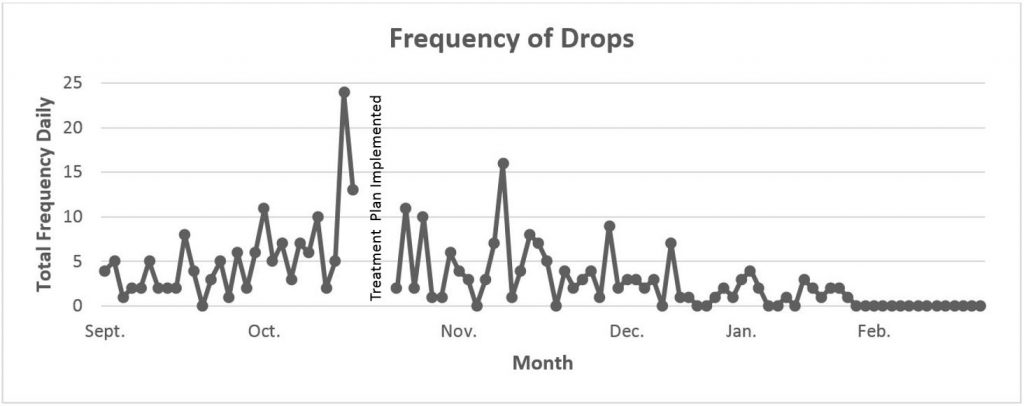The Knapp Center for Childhood Development utilizes best practices and evidence-based interventions of Applied Behavior Analysis (ABA) to reduce problematic behaviors. In ABA, behaviors are viewed in 3 parts: The antecedent, the observable behavior, and the consequence. Our treatment teams, comprised of Board Certified Behavior Analysts and Registered Behavior Technician’s, collect data to determine if there are specific patterns in antecedents and consequences, in order to hypothesize a “function” of the behavior. So in other words, the team needs to figure out why is this individual engaging in this behavior? What function does it serve? For instance, is engaging in the problematic behavior resulting in the individual gaining access to attention or access to preferred tangibles or activities? Does engaging in the problematic behavior result in the child being able to escape or avoid a demand, or is it a behavior that is considered self-stimulatory in nature? Once the Board Certified Behavior Analyst (BCBA) analyzes the data, a Behavior Intervention Plan (BIP) is developed. The BIP then involves teaching the child an appropriate alternative response to the problematic behavior. Reinforcement is then provided for the appropriate alternative response while reinforcement is withheld for the inappropriate, problematic behavior. The child then learns over time, that only appropriate behaviors result in reinforcement such as attention, tangibles, activities, or to request removal of demands, while problematic behaviors no longer result in the reinforcing consequence. Below are case studies that show reductions in problematic behavior following implementation of the BIP. Once the individual’s problematic behavior reaches 90%-100% reduction from baseline, a fading plan is initiated in order to fade the implementation of the BIP and promote generalization to other people and environments.

The graph above depicts the total frequency of screaming behaviors per day. Screaming was defined as “any high pitch vocalization above conversational level.” At baseline, this child was engaging in screaming behavior between 0 to 56 times per session. It was hypothesized that this screaming behavior was maintained by access to tangibles, since the screaming behavior occurred most frequently when access to a tangible item was restricted. First, the child was taught to appropriately request the tangible items; at first using pictures, then vocally, rather than to engage in the screaming behavior. Next, a brief delay was inserted to teach the child to wait for a specified period of time, with the goal of systematically increasing the amount of time the child could wait for the preferred tangible item (i.e., “First (instruction), then (tangible)”). Screaming reduced to zero levels, since the child now had an appropriate way to gain access to the items that he preferred.

The graph above depicts the total frequency of “drops” per day. Drops were defined as “any instance of falling to the floor or falling out of chair at a time in which the expectation was to sit or walk (not during play).” At baseline, this child dropped to the floor between 0 to 25 times per session. It was hypothesized that this dropping behavior functioned as a means to escape or avoid task demands. A behavior intervention plan was developed that included differential reinforcement and functional communication training to teach this child how to make appropriate requests, rather than engage in the dropping behavior (see graph below – Verbal Independent Requests). Drops reduced to zero levels, as they no longer served a purpose for this child.

This graph depicts the total frequency of independent vocal requests made per day. Once this child learned that using his words/requests resulted in him gaining access to preferred items and avoiding tasks that he didn’t enjoy as much, he began using his words more and more to communicate! As independent requests increased, dropping and screaming behaviors decreased. By improving this child’s expressive language skills, the behaviors of dropping and screaming no longer served a purpose for this child. He now says “I want ___.” or “One more minute” instead.
